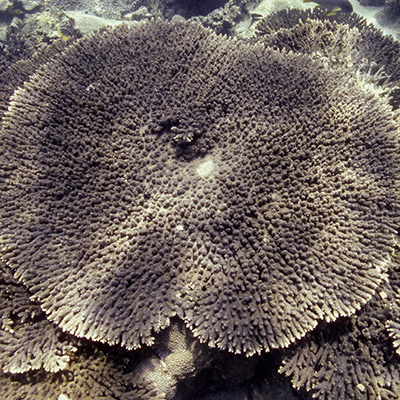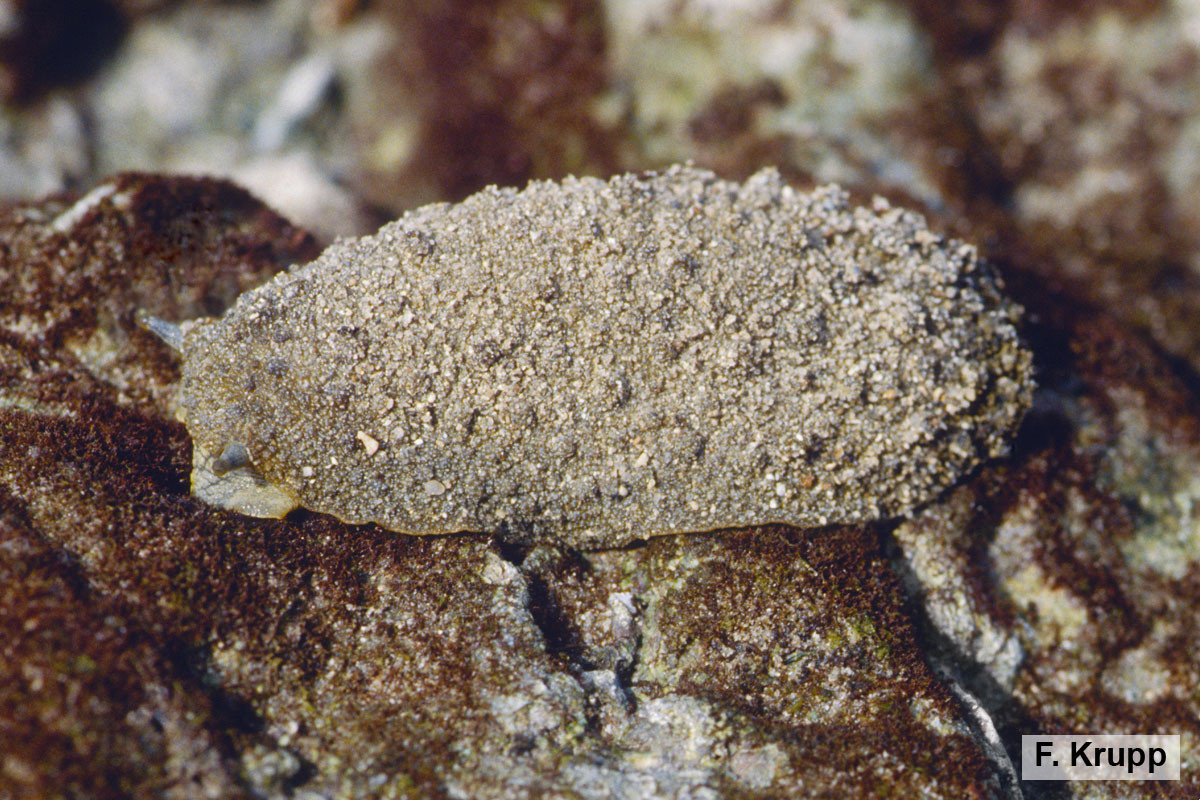Name: Peronia peronii
Local name:
Scientific name: Peronia peronii
Classification: Class – snails and slugs; order – Systellommatophora; family – Onchidiidae
Synonym: Previously known as Onchidium peronii
Size: Measurement ranges are 5.0 10.4 cm in length, 3.5 6.8 cm in width and about 2 cm in height.
Habitat:
Animals of this air-breathing species live in the upper intertidal zone, on the hard substrate of rocky coasts. They remain inactive during the day, staying in crevices and under rocks in the littoral fringe below the high water mark, and emerge at night during low tide to move around and feed when exposed to the air as the water recedes. Grazing on the organic film that coats rocks and mud on sheltered shores, they feed on algae, possibly also on diatoms and bacteria. In addition to the air-breathing lung for use out of water, special branched papillae on the dorsal surface are likely to help in gas exchange when the animal is submerged, thus functioning as gills.
Distribution:
Onchidiids occur in the temperate zones to the tropics, but are most diverse in the Indo-West Pacific. The known distribution range of this species is the Indian Ocean region along Madagascar and Mozambique and into the Red Sea; members of the genus Peronia are further known from Hong Kong and New Guinea and the islands of the western Pacific.
Conservation status:
Peronia peronii has not yet been assessed for the IUCN Red List of Threatened Species.
Description:
Peronia peronii belongs to the very unusual shell-less marine gastropods contained in the Onchidiidae, a family of air-breathing sea (and a few land) slugs. Though being true slugs, because they lack a shell as adults, onchidiids differ from almost all other sea slugs by having lost their ancestral gills and instead breathing air by means of a functional lung derived from the mantle. The mantle forms the outer wall of the body and covers the vulnerable internal organs, collectively known as the visceral mass, like a cloak. A double fold of the mantle encloses an external space, the mantle cavity. In onchidiids this cavity is shifted to the rear of the body, largely reduced and modified into a pulmonary sac that functions as a simple lung. Its rear wall contains a network of capillary blood vessels for gas exchange, with air flowing in and out of the cavity through a single small opening situated posteriorly below the mantle. The body of Peronia peronii is elongate oval and not strongly arched, the dorsal surface covered by a thick skin which is resistant to desiccation. The leathery muscular mantle is densely scattered with papillae that vary in form, size and structure, from coarse tubercles to fine granules, giving it a warty appearance. Most papillae bear eye-like structures, either singly or in irregularly arranged groups. The head is large, projecting beyond the mantle border, and bears two pairs of appendages: dorsally a pair of conical retractable tentacles, each with a small black eye at the tip, and ventrally a pair of fleshy sensory lobes called labial palps on either side of the mouth. The ventral part of the body is occupied by the elongated fleshy foot, the flat muscular creeping surface of most gastropods. The anus opens at the rear of the body (in contrast to being located close to the front in most other gastropods), behind the foot and under the mantle, next to the opening of the lung cavity. The cryptic slugs of this species are far from eye-catching in shape or coloration: the ground color above is brown, gray-green or olive, with an irregular pattern of lighter and darker patches, the head being rather more olive. The foot and the underside are regularly lighter in color, the foot sole more yellowish.








